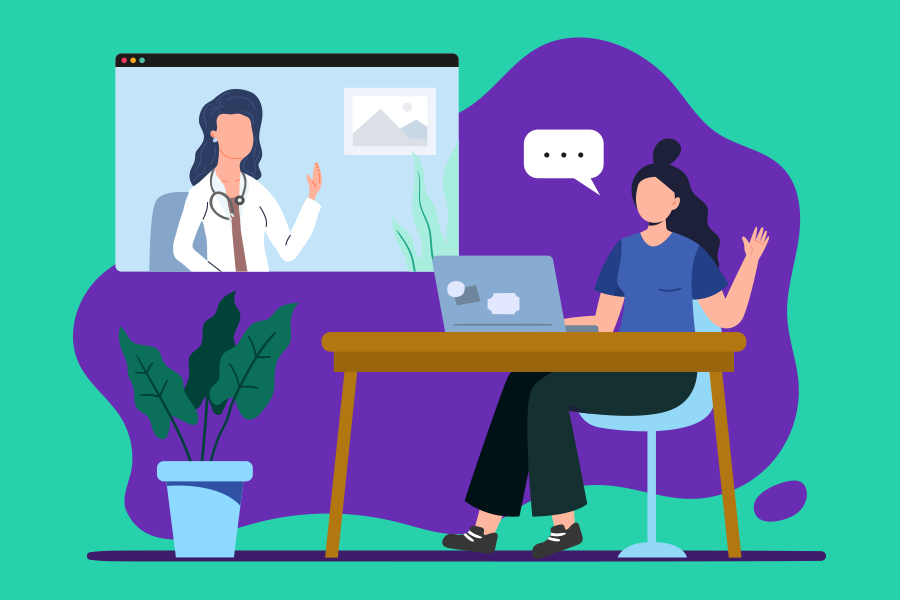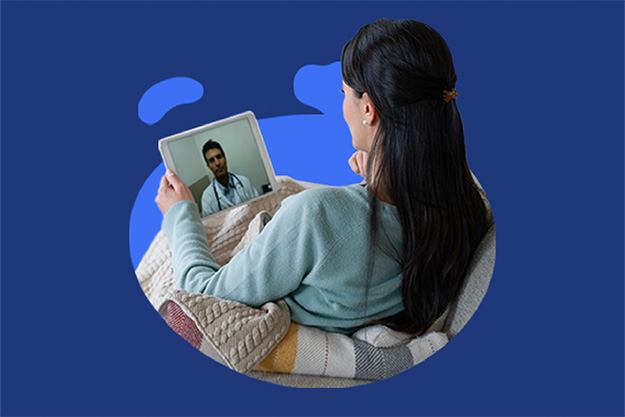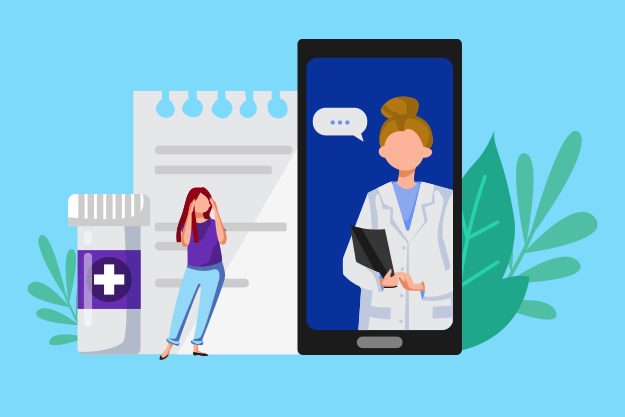Virtual Urgent Care Makes Healthcare More Accessible
During the COVID-19 pandemic, virtual urgent care’s resurgence offered an alternative pathway to care. It changed consumer insights on the topic,...
Connected Navigation Platform
Guiding to high-value care
Behavioral Health
Foster a mentally healthy workplace
EAP
Supporting holistic wellbeing
Virtual MSK Care
Reimagining musculoskeletal care
Virtual Primary Care
Powered by smart navigation
Surgery Centers of Excellence
Best-in-class surgical outcomes
Virtual Urgent Care
Immediate care, any hour of the day
Chronic Care
A new approach to chronic care
Integrations
Flexible to any strategy
5 min read
 Claire Wiseman Imber
:
September 22, 2021
Claire Wiseman Imber
:
September 22, 2021

“New normal.”
It’s a refrain that’s now part of our collective vocabulary (much to our chagrin). It’s true haven’t seen anything like the COVID 19 pandemic in at least a century, and after over a year, people everywhere have found ways to adapt to this new, strange world of variants, social distancing, masks, contactless services, and remote work.
There are so many aspects of our current crisis that can breed anxiety, but uncertainty may be the one hovering over them all.
The scale alone means no one is invulnerable to coronavirus anxiety, so it’s a safe bet that no matter how your company is handling the ongoing crisis, your employees are anxious.
There’s no good way to predict what will happen next. If it’s your job to raise morale and support employees, you may not be able to offer them a complete picture of what the future will bring. That doesn’t mean you can’t offer support. A support system at work — even a remote or hybrid one — can give employees the strength to move through an ever-evolving landscape with a little less fear.
According to the Psychiatric Times, “Zoom fatigue” refers to the worry, exhaustion, or burnout associated with overusing virtual platforms of communication. Like all other experiences associated with coronavirus, Zoom fatigue is widely prevalent, intense, and fairly new. Bottom line — virtual meetings are tiring. Although we might not realize it, conversations using a virtual platform require a lot more effort because employees are expected to be “on” while also trying to process tone and read body language through a computer screen. Not only that, but trying to talk through construction noises, people and pets walking through the background, or other home life occurrences, can feel stressful, or worse, embarrassing.
To combat this, consider giving employees the option to turn their video off or tap out of the meeting if their presence isn’t necessary.
As more offices reopen, those yearning for more social interaction may find the prospect of in-person work to be exciting and more productive. However, it’s important to keep in mind that not everyone shares that sentiment. According to a June survey by McKinsey, one-third of workers who had already returned to the office said that it negatively impacted their mental health; almost half of those who were still remote anticipated negative mental health impacts — attributing their concerns to their safety as well as scheduling flexibility.
In this post-pandemic world, designing events for in-person and online attendance can help organizations meet employees at their various comfort levels. By giving employees the option to decide how they want to participate, employers can reduce stress, foster an inclusive environment, and remain connected to their workforce.
See our post, “Ten Ways to Boost Employee Morale at Your Company” for more.
Even though COVID restrictions have eased in a number of states, the strain of the last year and the reality of changing safety rules remain. Working parents caring for young children at home and others sending kids back to school are under incredible stress. So are employees in a difficult relationship, an awkward roommate scenario, or even just a small space. Some of your employees are fighting loneliness, fear, and anxiety. Remember that every employee is facing a different situation at home, and that understanding those differences can help you better support employees.
Start at the top. A few simple lines in your CEO’s next email acknowledging fear, uncertainty, and coronavirus anxiety can go a long way toward fostering an open culture. Consider encouraging managers to put a little more emphasis on the personal in their 1-on-1s, as well. Yes, those of us still working are very focused on ticking off tasks. But understanding an employee’s unique personal challenges is an important step in helping them succeed during this challenging time. To do that, your employees need to feel comfortable opening up.
You can’t promise employees the future will be smooth. After all, none of us know what’s coming down the pipe. Transparency doesn’t require you to lay out every aspect of plans for the future — it just means telling employees what you know when you know it. For example, your company’s reaction to President Biden’s announcement requiring businesses with over 100 employees to mandate vaccinations against COVID or test for the virus weekly. You may not know how you’ll navigate the complexities surrounding the mandate, but keeping lines of communication open with employees could be critical to easing COVID anxiety.
When employees trust that you’ll give them relevant, up-to-date information about your expectations and plans, they won’t have to spend time worrying about what you AREN’T telling them. There’s a reason transparency is a hallmark of strong company cultures. It’s never been more important.
In this guide, we’ve rounded up our best tips for improving your benefits communication. Whether you want strategies for open enrollment or to improve your year-round communications, this guide has resources for every benefits communication conundrum.
Data from Johns Hopkins indicates a 12% dip in daily COVID cases from the Sept. 1 peak. While this is definitely a promising sign, what it means going forward remains uncertain, making it difficult for employees to see the light at the end of the tunnel. Today, more than ever, focusing on their health and wellness is crucial to the success and sustainability of your business.
That could mean pointing toward free meditation resources, deals on healthy food, or gyms offering free online workouts. If you’ve found a good free online game, puzzle, or documentary, why not share it with employees? Invite them to share with coworkers, too. When you crowdsource activities, you’ll find far more to share. At HealthJoy, we’ve created a “virtual break room” channel in Slack where employees can share what they’re doing, eating, and watching to stay healthy and active. It’s a hit, and I’ve used it to find everything from lunch specials to local donation drives.
If you offer an employee assistance program (EAP) or behavioral health program, now is the time to make sure employees know that they exist. EAPs and behavioral health programs address issues likely to impact employee performance. However, while EAPs offer free, short-term counseling that focus on outside stressors like financial and legal concerns, behavioral health programs offer long-term therapeutic resources to help employees develop healthy behaviors and deal with substance abuse, addiction, gambling, and other issues. These are the best tools you can offer anxious employees during the COVID 19 crisis.
Despite their prominence, EAP utilization rates remain low. The Washington, D.C.-based National Business Group on Health found median utilization to be around 5.5% (see Why Employees Don’t Use Your EAP Program for more). That’s likely due to a combination of factors, like a lack of employee education and a confusing benefits delivery system. Don’t let your employees fall into that gap.
To bolster awareness, include EAPs and behavioral health programs into your open enrollment communications, promote them year-round like any other benefit, and offer a training session to all managers. From your company Slack feeds to emails and your intranet, provide the information you need to help employees understand these services are free or low-cost, confidential, and available to manage their anxiety symptoms from home.
In our telemedicine pulse survey, of the people who tried telemedicine for the first time during the COVID 19 pandemic, 54% said they’d seek virtual options for all routine healthcare services, and go in person specifically for services that can’t be done virtually. Unfortunately, telemedicine faces a similar obstacle as EAPs: employees simply don’t know that it’s there.
To bridge the knowledge gap and make sure employees take advantage of their virtual care benefits like telemedicine, Virtual MSK Care, and more, employers and HR teams should create robust education campaigns and plan year-round communications to keep these programs top-of-mind. Whether by email or sending reminders to their mobile devices, increasing awareness helps employees have a more complete picture of their benefits and lead to better health outcomes.
Even though offices are reopening, prioritizing employee wellness is more important than ever. By offering flexibility, connection and support, you can help employees move through a period of anticipation, stress, and through COVID-19 anxiety, with a little less fear and uncertainty.
This post was originally published in April 2020 and updated in 2021.

During the COVID-19 pandemic, virtual urgent care’s resurgence offered an alternative pathway to care. It changed consumer insights on the topic,...

During the pandemic, we heard a lot about the harmful effects of delayed care. Employees who were afraid to see their doctors in person skipped...

These constantly-changing plans put employees in a precarious position: adding mounting fear, anxiety, stress, and worse to their existing workload.